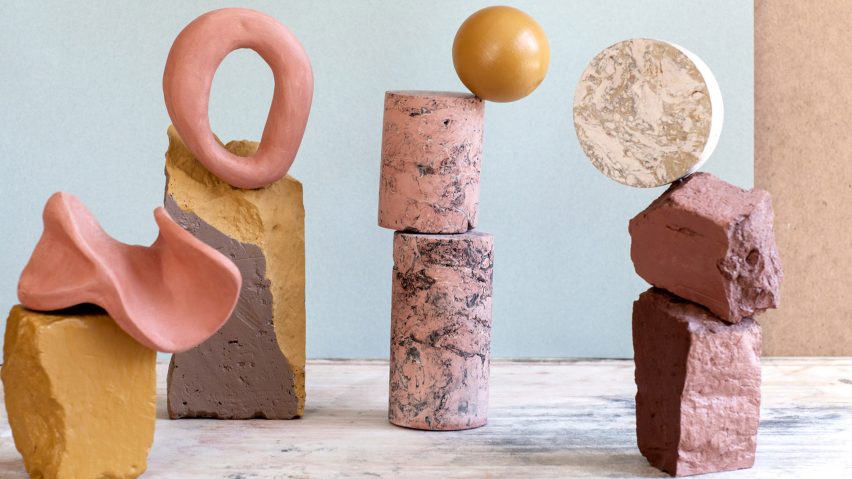Geometric shapes balance precariously atop misshapen forms in this abstract sculpture series by Swedish designer Malou Palmqvist.
Called Balanced Collapse, the sculptures juxtapose amorphous shapes made of clay with wooden bases and geometric stone plaster forms, which appear to balance weightlessly in mid-air.
"I am fascinated by the fundamental laws of nature," said Palmqvist. "I like it when a hard, rigid material appears weightless, almost as if it is hovering in space."
"I also like calmness, simplicity and playing with the proportions, strength and structure, the combination of clean, geometric forms with rough and organic shapes," she told Dezeen.
According to Palmqvist, the sculptures are inspired by the rock formations in the Gothenburg archipelago where she lives in southwest Sweden, and the misshapen pieces of rubbish that wash up at its shores.
"I am inspired by the nature around me, the barren rocks, the formations and the textures of the cliffs," she said.
"My organic shapes are a well-studied but odd interpretation of scattered pieces of waste that might wash ashore near my home along with seaweed," she explained.
Each individual component is coloured in pastel and earthy hues using natural glazes and pigments.
The ceramic bodies are made of clay that has been shaped by hand. It is hollowed-out so that it doesn't crack in the kiln, and fired twice – a process that transforms the material "from a soft, fragile substance to one that is rock-hard and impervious to water and time".
For the wooden bases, Palmqvist hand-cut the pieces into the desired shapes. These were then sanded for smoothness and painted.
The stone-plaster pieces were mixed with glue and natural dyes, before being shaped in containers and left to air dry. These were then polished and sealed with a protective layer of wax.
Similar ceramic products include a series of lumpy nose vases and pink nipple clocks by German design studio BNAG and a collection of nature-inspired stoneware by ceramicists Emily Rae Counts and Jessie Rose Vala.

